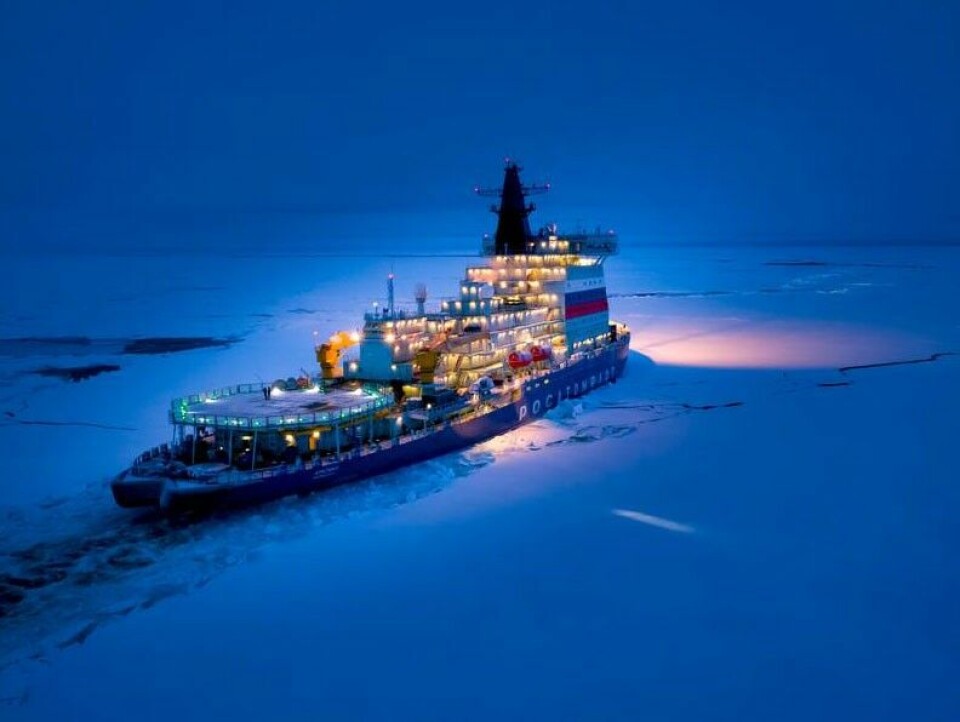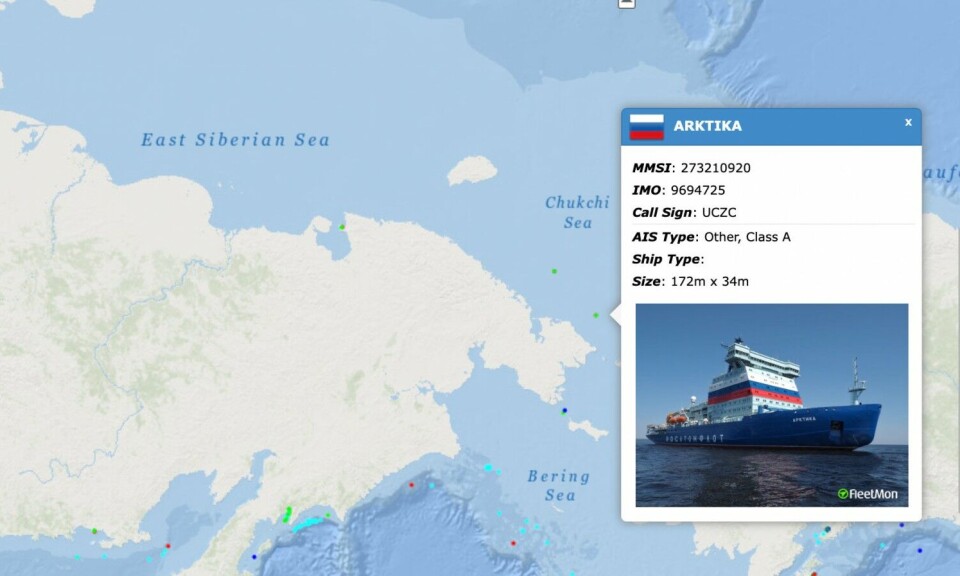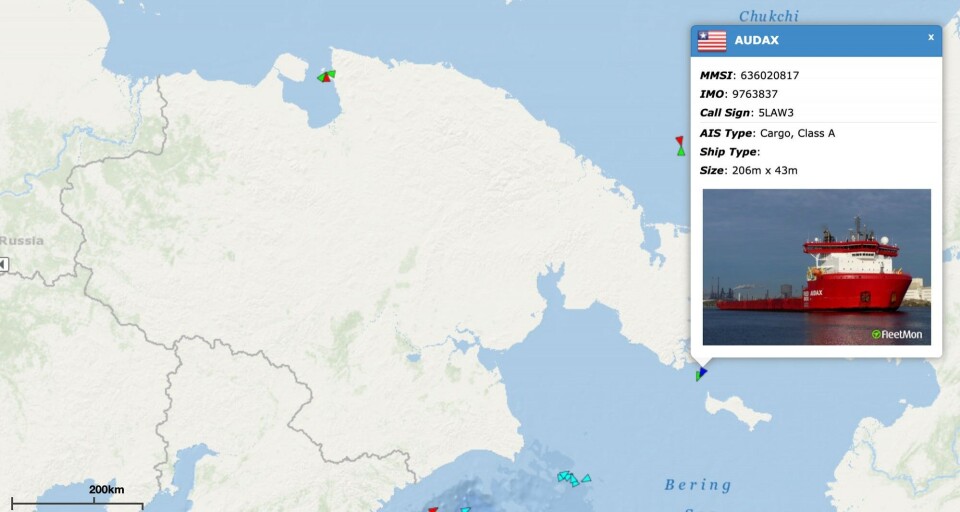
Russia's grand Arctic plan might get stuck in the ice
The troublesome shipping on the Northern Sea Route continues into the new year. Almost three weeks after the world's most powerful icebreaker arrived in the Chukchi Sea, none of the four vessels stuck in the area have broken out of the ice.
Russia intends to start year-round transit shipments on the Northern Sea Route already in 2024 and that same year reach at least 80 million tons of shipping volumes on the route. But experiences from this winter show that capricious sea-ice could lead to a wreck of plans.
The Arktika on January 1 arrived in Pevek with a convoy of two cargo vessels. The Inzhener Trubin and Yuri Arshenevsky both carried construction goods for the Baimskaya copper mining project. In the convoy was also conventional icebreaker Kapitan Dranitsyn. Shortly later, the Arktika escorted also the Polar King to Pevek.
The shipments were almost two months behind schedule. The carriers were originally to arrive in the far eastern town already in November, but the early freeze in the region and the lack of available icebreakers prevented them from entering the area.
It was the maiden voyage to the eastern part of the Northern Sea Route for the new icebreaker, the world’s most powerful, and the passage was hailed by icebreaker operator Rosatomflot. According to the state company, the Arktika is meeting expectations.
“We are satisfied with the results of the east-bound passage,” said Mustafa Kashka, General Director of icebreaker base Atomflot.
However, despite the presence of the world’s most powerful icebreaking vessel, the complicated logistical situation in the region has not been easily resolved.
Almost three weeks after the Arktika’s arrival to Pevek and the Chukchi Sea, the Inzhener Trubin, Yuri Arshenevsky, Polar King as well as a fourth cargo vessel, the Lev Yashin, have not yet made it out of the deep sea-ice.

Ship traffic data show that the Arktika is slowly escorting the Yuri Arshenevsky towards the Bering Strait. About 200 km in their wake follow the Lev Yashin and icebreaker Kapitan Dranitsyn.
The two convoys are likely to make it through the Bering Strait in the course of the next few days. The Yuri Arshenevsky has Murmansk as its home port and it is not known whether the ship is forced to sail towards the Pacific because of the complicated sea-ice conditions, or whether it has other contract obligations in the Far East.
Ice maps from the Russian Arctic and Antarctic Research Institute show a thick layer of sea-ice across the whole region. Practically all of the Laptev Sea and East Siberian Sea have an ice layer that is at least 30 cm thick and in areas up to 2 meters. In the area of the Wrangel Island is also a multi-year ice layer, and south of the New Siberian Islands is a solid layer of fast ice.
However, an Arctic shipping expert says to the Barents Observer that it might not be the ice-thickness that is the main challenge, but rather ice compression. Northernly winds might have pushed the ice pack against the Siberian coastline creating compression and ridging within it, the analysts explains.
Rosatomflot is now sending a second nuclear-powered icebreaker to the region. The Yamal was on the 17th of January sailing into the East Siberian Sea. It is expected to head for Pevek where the Inzhener Trubin and Polar King are stuck in the local seaport.
Shipments across the eastern parts of the Northern Sea Route came to an abrupt halt in November after more than 20 vessels got stuck in the area. Several of them were ice-locked in the desolate waters for weeks.

In late December, the last transit shipment of 2021 took place as icebreaker Yamal escorted heavy loads carrier Pugnax to Murmansk. Sister ship Audax is now due to transit on the route in the last part of January. Together with LNG carrier Vladimir Vize, the ship is to sail through the Bering Strait and into the Chukchi Sea in the course of this week.
However, on Monday the 17th the two ships turned around and appeared to halt their entry into the icy waters. They might ultimately be joined by nuclear-powered containers ship Sevmorput that on the 17th of January left Vladivostok and sailed northwards with Murmansk as its destination.
A critical situation is unlikely to unfold. But the complicated sea-ice situation and slow shipments across the far northern waters illustrate that Moscow’s ambitions for year-round transit shipping on the Northern Sea Route will not be easy. Despite the country’s construction of a total of five, and possibly seven, LK-60 icebreakers.
According to Russian First Deputy Prime Minister Yuri Trutnev, year-round transit shipments will start already in the winter of 2023-2024.

















